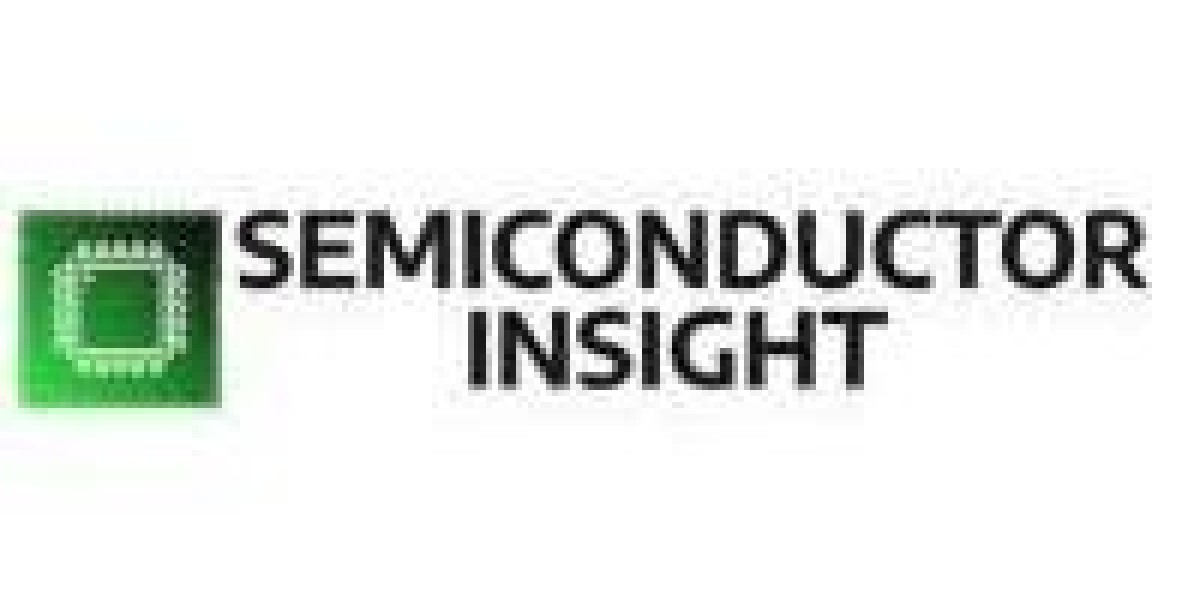The global Industrial Chips market was valued at US$ 61510 million in 2022 and is projected to reach US$ 98370 million by 2029, at a CAGR of 6.9% during the forecast period. The influence of COVID-19 and the Russia-Ukraine War were considered while estimating market sizes.
Industrial chips, also known as industrial microchips or industrial integrated circuits (ICs), are electronic chips specifically designed for use in industrial applications. These chips are built to withstand tough conditions commonly found in industrial environments, such as high temperatures, humidity, vibration, and electromagnetic interference.
Industrial chips are crucial in various industrial sectors, including manufacturing, automation, energy, transportation, and telecommunications. They are used in a wide range of industrial equipment and systems like programmable logic controllers (PLCs), motor drives, sensors, power supplies, robotics, and communication devices.
When it comes to design and architecture, industrial chips prioritize reliability, durability, and performance. They are created to handle extreme temperatures, protect against electrical noise and voltage fluctuations, and have a long lifespan.
These chips often include specialized features such as real-time operating systems (RTOS), advanced communication protocols (e.g., CAN, Ethernet), and industrial fieldbus interfaces (e.g., PROFIBUS, Modbus). These features facilitate smooth integration with industrial control systems and efficient data exchange between different devices.
This report aims to provide a comprehensive presentation of the global market for Industrial Chips, with both quantitative and qualitative analysis, to help readers develop business/growth strategies, assess the market competitive situation, analyze their position in the current marketplace, and make informed business decisions regarding Industrial Chips.
This report contains market size and forecasts of Industrial Chips in globally, including the following market information:
Global Industrial Chips Market Revenue, 2018-2023, 2024-2029, ($ millions)
Global Industrial Chips Market Sales, 2018-2023, 2024-2029, (M Pcs)
Global top five Industrial Chips companies in 2022 (%)
Global key players of industrial chips include Texas Instruments, Infineon, Intel, Analog Devices, STMicroelectronics, etc. The top five players hold a share about 49%. North America is the largest market, has a share about 29%, followed by Europe and China, with share 24% and 22%, separately.
![]()
We surveyed the Industrial Chips manufacturers, suppliers, distributors and industry experts on this industry, involving the sales, revenue, demand, price change, product type, recent development and plan, industry trends, drivers, challenges, obstacles, and potential risks.
| Report Attributes | Report Details |
|---|---|
| Report Title | Industrial Chips Market Size, Emerging Trends, Technological Advancements, and Business Strategies 2023-2029 |
| Market size in 2022 | US$ 61510 million |
| Forecast Market size by 2029 | US$ 98370 million |
| Growth Rate | CAGR of 6.9% |
| By Type |
|
| By Technology |
|
| By Application |
|
| Key players |
|
| Historical Year | 2018 to 2022 (Data from 2010 can be provided as per availability) |
|---|---|
| Base Year | 2022 |
| Forecast Year | 2030 |
| Number of Pages | 100+ Pages |
| Customization Available | Yes, the report can be customized as per your need. |
Total Market by Segment:
Global Industrial Chips Market, by Type, 2018-2023, 2024-2029 ($ Millions) & (M Pcs)
Global Industrial Chips Market Segment Percentages, by Type, 2022 (%)
- Computing and Control Chips
- Communication Core
- Analog Chip
- Memory
- Sensor
- Security Chips
- Microcontrollers (MCUs)
- Digital Signal Processors (DSPs)
- Application-Specific Integrated Circuits (ASICs)
- Field-Programmable Gate Arrays (FPGAs)
- System-on-Chip (SoC)
- Power Management ICs
Global Industrial Chips Market, by Technology, 2018-2023, 2024-2029 ($ Millions) & (M Pcs)
Global Industrial Chips Market Segment Percentages, by Technology, 2022 (%)
- Electricity and Energy
- Rail and Transportation
- Factory Automation and Control Systems
- Medical Electronics
- Others
Global Industrial Chips Market, by Application, 2018-2023, 2024-2029 ($ Millions) & (M Pcs)
Global Industrial Chips Market Segment Percentages, by Application, 2022 (%)
- Programmable Logic Controllers (PLCs)
- Motor Drives and Control Systems
- Human-Machine Interfaces (HMIs)
- Industrial Communication (e.g., Ethernet, CAN, Fieldbus)
- Industrial IoT (IIoT) and Edge Computing
- Industrial Robotics and Automation
- Power Supplies and Converters
- Sensing and Measurement Systems
- Process Control and Monitoring
- Safety and Security Systems
Global Industrial Chips Market, By Region and Country, 2018-2023, 2024-2029 ($ Millions) & (M Pcs)
North America is currently the largest market for industrial chips, followed by Europe and the Asia Pacific region. The growth of the industrial chips market in North America can be attributed to the rising demand for industrial automation, particularly in the automotive and aerospace sectors. The increasing need for streamlined processes and advanced technologies has fueled the demand for industrial chips in these industries.
In Europe, the industrial chips market is experiencing growth primarily due to the increasing demand for industrial automation in the manufacturing and energy sectors. As businesses strive for greater efficiency and productivity, the adoption of automation technologies has surged, leading to an increased requirement for industrial chips to power these automated systems.
The Asia Pacific region is also witnessing significant growth in the industrial chips market, driven by the escalating demand for industrial automation in the manufacturing and consumer electronics industries. With the region being a manufacturing hub and the presence of a vast consumer electronics market, the need for industrial chips has soared to support automated manufacturing processes and the development of advanced consumer electronic devices.
Global Industrial Chips Market Segment Percentages, By Region and Country, 2022 (%)
North America
- U.S.
- Canada
Europe
- U.K.
- Germany
- France
- Spain
- Rest of Europe
Asia-Pacific
- India
- Japan
- China
- Australia
- South Korea
- Rest of Asia-Pacific
Latin America
- Brazil
- Mexico
- Rest of Latin America
The Middle East & Africa
- South Africa
- GCC Countries
- Rest of the Middle East & Africa (ME&A)
Further, the report presents profiles of competitors in the market, key players include:
- Texas Instruments
- Infineon
- Intel
- Analog Devices
- STMicroelectronics
- Renesas
- Micron Technology, Inc.
- Microchip
- onsemi
- Samsung
- NXP Semiconductors
- Broadcom
- Xilinx
- Taiwan Semiconductor Manufacturing Company (TSMC)
- SK Hynix Inc.
The global top five industrial chips companies in 2022, ranked by market share, are:
- Infineon Technologies: With a market share of 24%, Infineon Technologies is a German semiconductor company specializing in power management, security, sensors, and automation solutions. They offer a diverse range of products for various industrial applications.
- Texas Instruments: Holding 18% of the market share, Texas Instruments is an American semiconductor company known for its expertise in analog and embedded processing solutions. They have a rich history of innovation and are prominent suppliers of industrial chips for automation, control, and communications.
- STMicroelectronics: Accounting for 15% of the market share, STMicroelectronics is a Swiss-Italian semiconductor company focusing on microelectronics. Their extensive product portfolio caters to a wide range of industrial applications. They excel in providing microcontrollers, memory chips, and analog chips.
- Renesas Electronics: With a 12% market share, Renesas Electronics is a Japanese semiconductor company specializing in microcontrollers, analog chips, and power management solutions. Renesas Electronics stands out as a leading supplier of microcontrollers for automotive and industrial applications.
- NXP Semiconductors: NXP Semiconductors, a Dutch company, holds a 10% market share and specializes in microcontrollers, security solutions, and automotive chips. Their broad product range caters to diverse industrial applications, making them a significant player in the market.
Key Drivers:
- Increasing demand for industrial automation: Industries are increasingly adopting automation solutions to enhance productivity, improve efficiency, and streamline operations.
- Need for more reliable and efficient electronic devices: As industrial processes become more complex, there is a growing demand for robust and high-performance electronic devices to ensure smooth and uninterrupted operations.
- Growth of the automotive and aerospace industries: The automotive and aerospace sectors are witnessing substantial growth, creating a greater demand for advanced industrial chips to power various applications, including vehicle control systems and avionics.
- Rise of the Internet of Things (IoT): The proliferation of IoT devices in industrial settings necessitates the use of industrial chips for connectivity, data processing, and control, driving the market growth.
- Government initiatives to promote the use of electronic devices in industries: Governments worldwide are implementing policies and incentives to encourage the adoption of electronic devices, fostering the expansion of the industrial chips market.
Restraints:
- High cost of industrial chips: The development and manufacturing of industrial chips involve complex processes, resulting in higher production costs, which can limit their widespread adoption.
- Shortage of skilled labor: The industry faces a shortage of skilled professionals capable of designing, developing, and maintaining industrial chips, which can hinder market growth.
- Complexity of the manufacturing process: The intricate nature of manufacturing industrial chips poses challenges in terms of yield, quality control, and scalability, leading to potential manufacturing constraints.
- Intellectual property (IP) issues: Protecting intellectual property rights and preventing counterfeiting and piracy is a concern in the industrial chips market, which can impact market growth and profitability.
Opportunities:
- Development of new technologies, such as 5G and artificial intelligence (AI): The integration of 5G connectivity and AI capabilities in industrial applications presents opportunities for the development of innovative industrial chips to enable advanced functionalities and higher data processing speeds.
- Growth of the renewable energy sector: The expanding renewable energy sector, including solar and wind power, creates avenues for the utilization of industrial chips in energy management, power conversion, and grid integration systems.
- Expansion into new markets, such as Asia Pacific and Latin America: The emerging economies in Asia Pacific and Latin America offer untapped market potential, driven by industrialization, infrastructure development, and increasing adoption of automation technologies.








